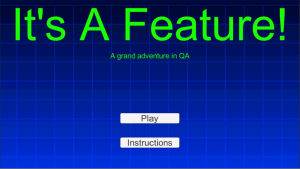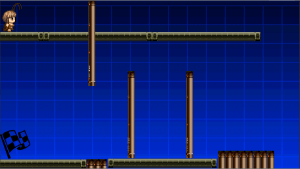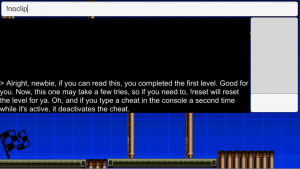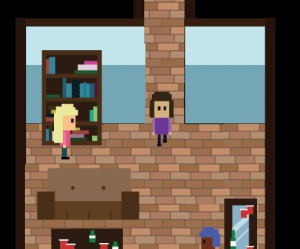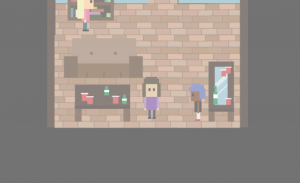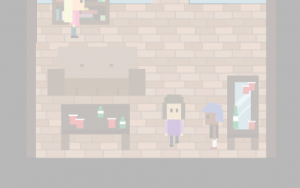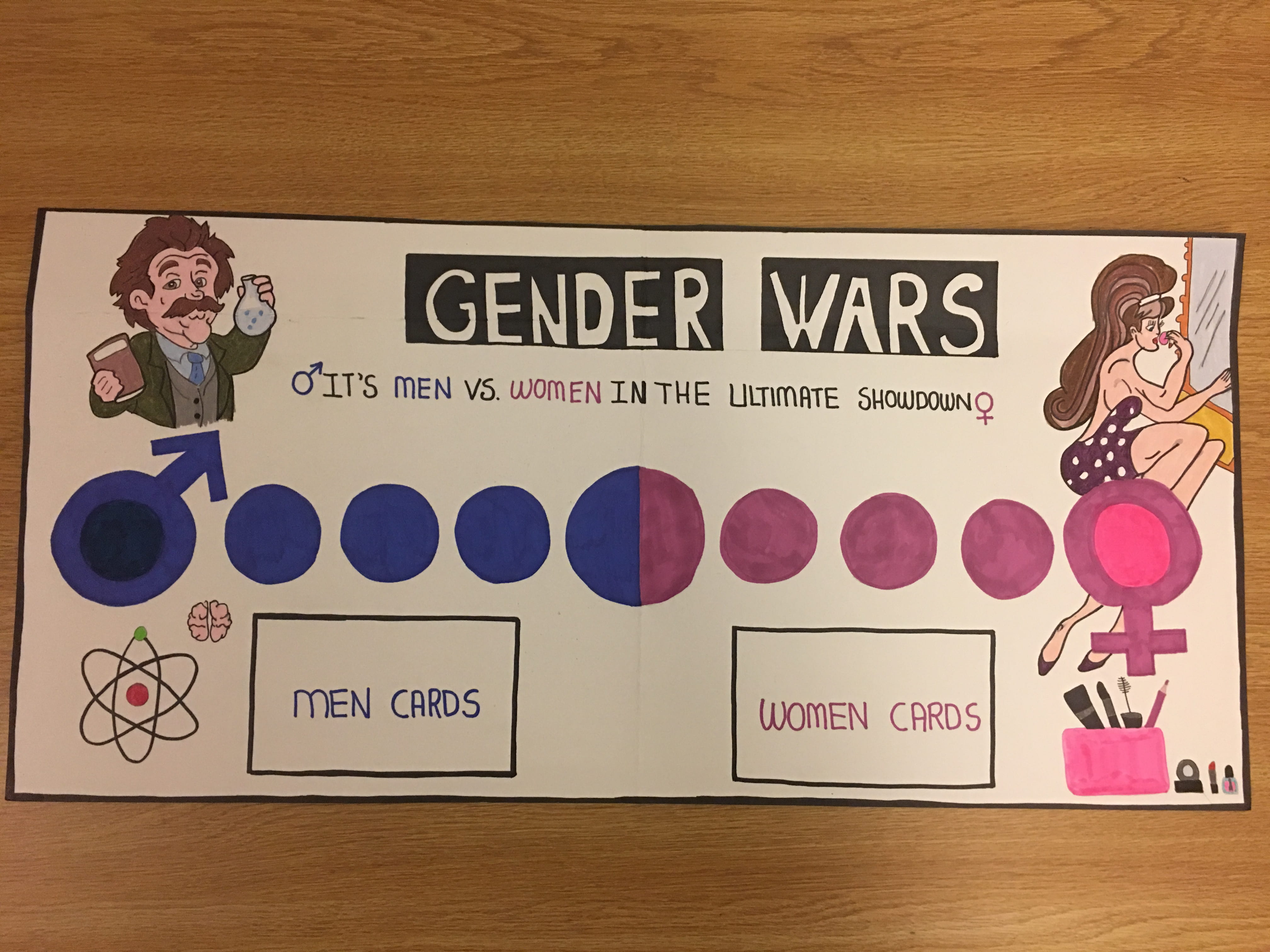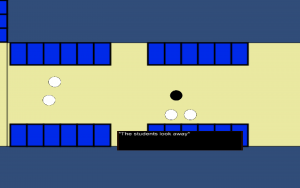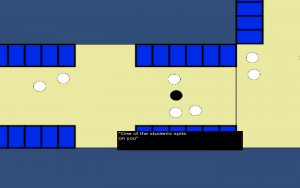Play my game here:
http://www.philome.la/10itemsorlex/3xdiarykind—never-grow-up
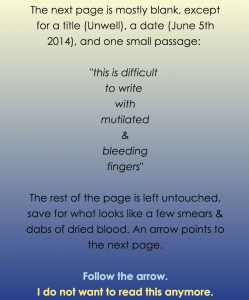

3xdiarykind is an interactive fiction game where you get the chance to actively explore three diaries– they happen to be mine, kept from 5th grade until my senior year of high school. The design is simple on purpose. It is not supposed to be flashy or anything– it should mimic the simplicity of the books they are based on.
The formatting of the name is taken from Homestuck, a webcomic that sustained me during my most difficult years. Humorously enough, you can actually see my attitude towards Homestuck change throughout the course of the game.
Additionally, 3xdiarykind makes numerous references to other video games. This is a testament to my love of video games, & one of the most oddly charming parts of the game, I think.
My game is meant to serve as a commentary on mental illness, & I think it’s unique in that the experiences described are the real, genuine experiences of a neurodivergent child ~> young adult. They are not fabricated in the slightest– every single word you see in quotations is taken directly from my diary. I’m very interested in games about mental health, or games that at least explore those themes, such as Depression Quest. Mental illness is sort of a tricky topic to navigate, however, because as much as I want it to become normalized, I don’t want it to become trivialized. Mental illness isn’t a cute little quirk we can slap on to any old character & call it a day– it’s complex, & treating it like it’s not is frankly disrespectful to those of us who live with a mental illness.
Additionally, my game explores themes of growing up, or, more accurately, refusing to grow up. Of course this theme is natural– it wasn’t intentional, it simply exists because my diaries perpetuate it. It’s simultaneously interesting & cringeworthy for me, being both the author of the game & the author of the diaries from which the content is taken from. I hope it provides a little amusement, & distracts from the rest of the game.
When I set out to create this game, my initial idea was quite different. I wanted to use my diary in some way, but I wasn’t sure how. It was actually Hex who inspired me to really check out interactive fiction, & their game suggestions convinced me that IF would be the most successful way of conveying my story. That’s really all my game is. It’s a story of a girl who knew something was wrong, who documented it, who wanted to feel differently, but who didn’t know what to do.
My playtesters (my friends, predominantly) said that this game was extremely difficult to get through because of the subject matter. They had an especially difficult time because they know me, they care deeply about me, & it’s difficult to imagine a close friend suffering. I hope that other players will be able to experience it with a little less difficulty. It is not my goal to make people upset…in fact, I didn’t stop to think about how empathetic players may feel terribly sad while playing this game. Instead, I wanted to simply raise awareness about mental illness, especially in children. After all, I am a well adjusted, high-functioning young adult now, thanks to years of cognitive behavioral therapy. This game is a somewhat cautionary tale I suppose, but even that is not exactly accurate.
This game is a culmination of everything I want to do in games. This year, the games I was most proud of were the ones that dealt with deeper themes– in this case, my first Balloon Piece. I was fairly dissatisfied with my word game & my stealth game, simply because they felt pointless to me. I want to make things that matter, or things that are autobiographical in nature. I’m thankful that this class gave me that opportunity. I’m only upset that I did not make four games that capture my values.
I hope this final piece makes up for all of that.
The scope may be small but it’s also vast. It’s seven plus years of my life. I hope you find some meaning in it.

